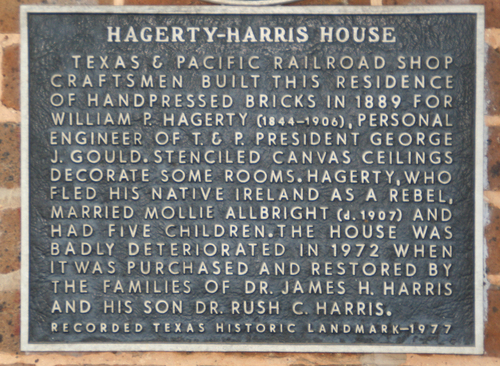505 E. Rusk, Marshall
Current Owner 2013: James F. & Mary Norvell
Sanborn Maps:
- Marshall 1894, Sheet 7, Block 6, Lot 505
- Marshall 1899, Sheet 13, Block 6, Lot 505
- Marshall 1904, Sheet 13, Block 6, Lot 505
- Marshall 1909, Sheet 11, Block 6, Lot 505
- Marshall 1915, Sheet 15, Block 6, Lot 505
National Register File
The Hagerty House was listed on the National Register in 1978.TX Historical Marker
The Hagerty House became a Tx historiacl landmark in 1977.Architectural Survey
• Description: The Hagerty-Harris house is a two-story, brick, 1889 Italianate structure with a central hall plan, low pitch hip roof and 2/2 segmentally-arched double-hung windows. The front facade has bracketed eaves with double three-bay galleries with square posts. The single front door is segmentally-arched with a transom. On the east side of the house there is a one-story rectangular bay window and on the west side there is an arched one-story bay window. The house contains two, one-story wings at rear.
• Significance: The Hagerty-Harris house was the first solid brick residence built in Marshall and was also the first example of Italianate architecture within the city, and remains one of the best preserved in the county.
Historical Background
Thomas Higgins built the Hagerty home in 1889 for William P. Hagerty, the personal engineer for the Texas & Pacific railroad president, George J. Gould. The majority of homes built nearby at the time were made of lumber due to the plentiful supply from the East Texas pine tree forests. So it is important to note that the Hagerty house was the first solid brick residence in Marshall.
Born in Ireland and raised as a devout Roman Catholic, William P. Hagerty fled to New York in 1862 after taking part in a rebellion against the British government. While working in Philadelphia as a reporter, he learned of a job opportunity with the Texas and Pacific Railroad and moved to Marshall in 1876. According to the Harrison County Census of 1880 William married Molly Allbright who eventually became the mother of six children. Remaining devout Catholics and wanting to be nearest to the Catholic Church as possibly, the Hagertys chose the current lot as the site for their new home.
Hagerty died in a train accident in 1906, followed by his wife a year later but the house remained within the possession of the family until it was vacated in 1967. The house soon began to deteriorate and city officials were planning on razing the home to the ground until Dr. James Harris purchased the house in 1972 from Hagerty's youngest son, Joseph Hagerty. (Harrison County Deed Records, Vol. 716, Pg. 85, filed October 26, 1972). James Harris and his wife Romelle A. began restoring the home before they deeded the house to their son, Rush Crews Harris and his wife Susan Nagle Harris in 1974. (Harrison County Deed Records, Vol. 743, Pg. 76, filed February 25, 1974). Rush and Susan Harris continued the restoration project to its completion. The exterior was restored to its original appearance except for a missing gallery and portico. An original L-shaped porch on the back west corner was removed and composition shingles replaced the raised-seam copper roof. Two unique features of the interior of the house that remain today include an Irish toile design mantelpiece and stenciled canvas ceilings.
According to the Texas divorce records, Rush and Susan Harris got a divorce in 1984, and apparently Susan's name was transferred to the house title. (Ancestry.com. Texas, Divorce Index, 1968-2002 [database on-line]. Provo, UT, USA: Ancestry.com Operations Inc, 2005.) Deed records show that Susan Hagle Harris sold the Hagerty-Harris home in 1988 to James J. Krushenishy and his wife, Laurie A. Krushenisky. (Harrison County Deed Records: Vol. 1169, Pg. 605, filed Feb. 4, 1988.) The Krushenisky family lived in the home until 2003, when they sold it to the current owners, Charles and Lisa Bertrand. (Harrison County Deed Records: Vol. 2686, Pg. 271, filed August 22, 2003.)
As of 2013, the house still remains in excellent condition due to the Bertrands continual maintainance of the historical integrity of the Hagerty-Harris home.
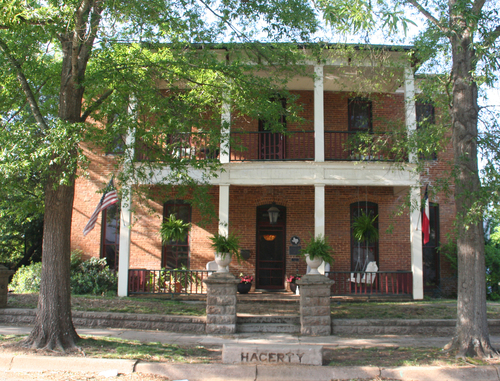
_rdax_333x500.jpg)
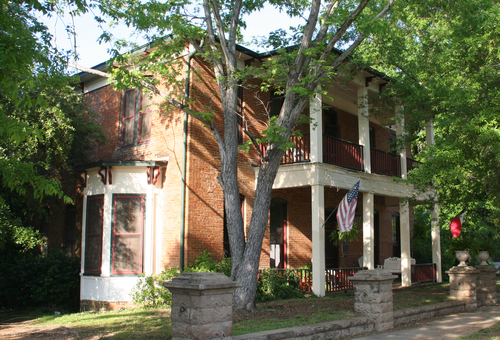
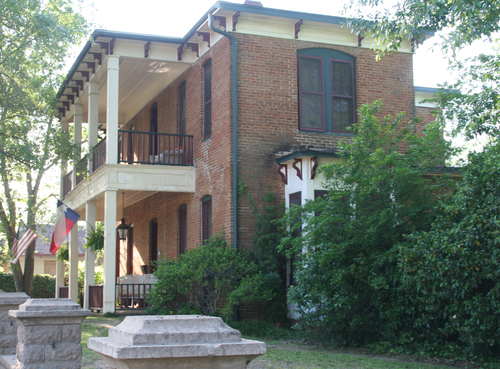
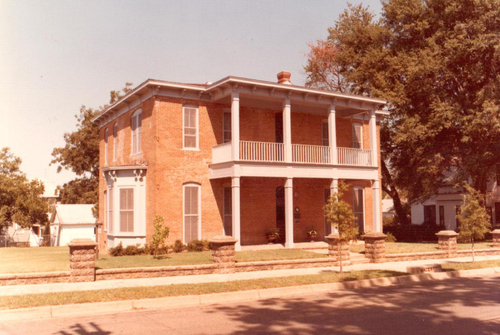
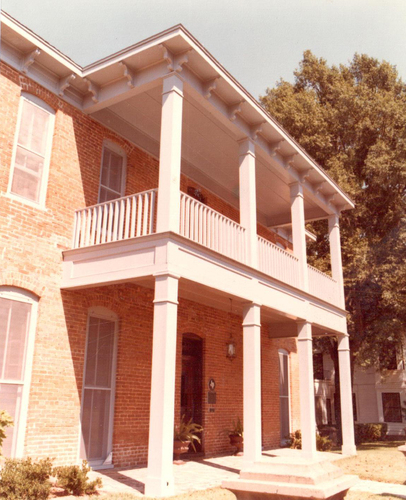
_rdax_500x428.jpg)
